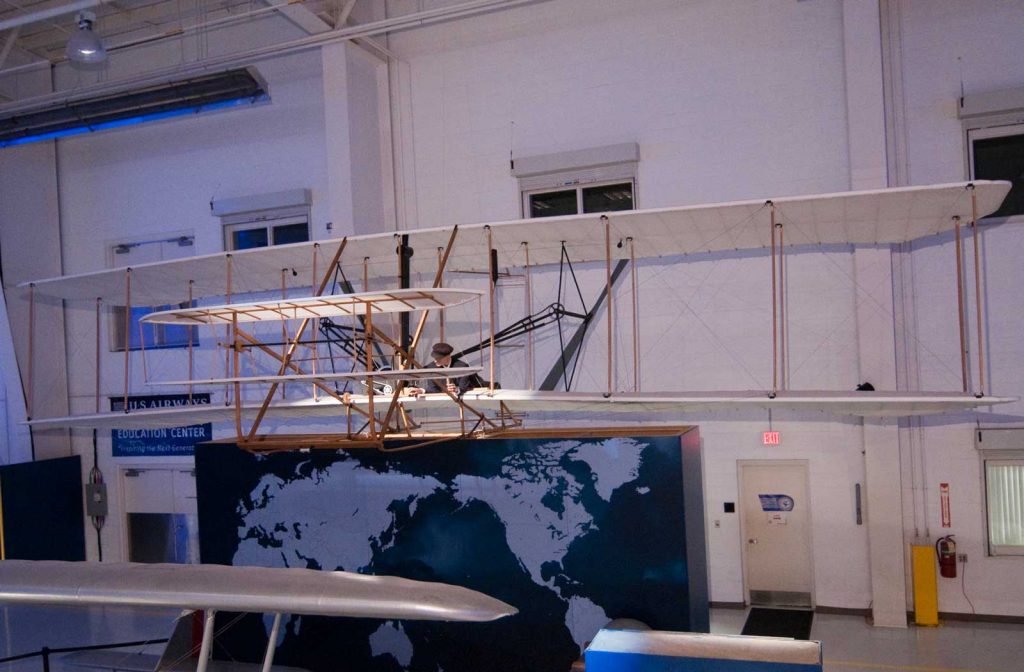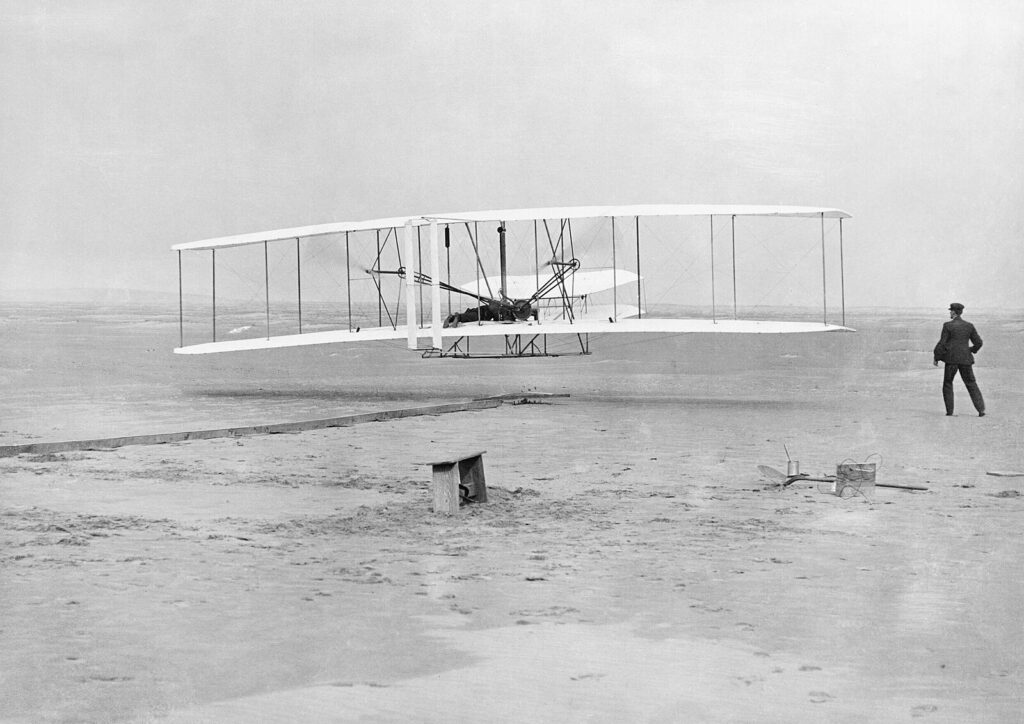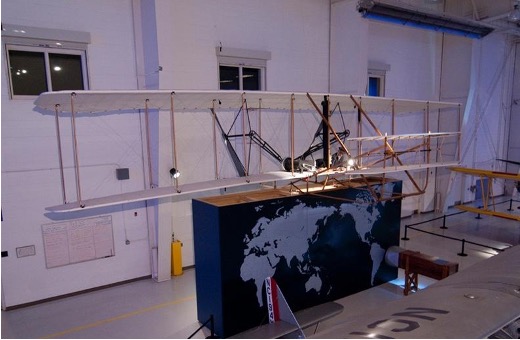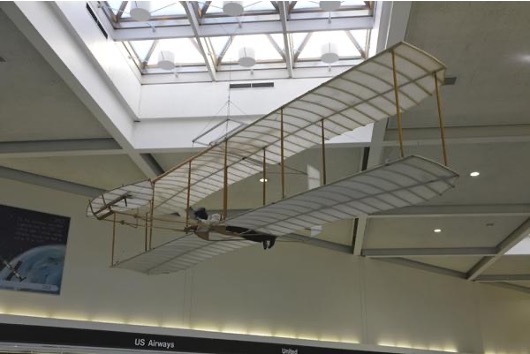This December 17 marked a momentous occasion—the 120th anniversary of the Wright Brothers’ groundbreaking flight at Kitty Hawk. On this day in 1903, Orville and Wilbur Wright etched their names in history by achieving the first sustained, controlled, powered flight. This pivotal event not only transformed the course of aviation but also ignited the flame of innovation that continues to illuminate the skies today.
Orville and Wilbur Wright were more than mere inventors; they were visionaries who dared to chase their dream of flying. The Wright Brothers’ aircraft, the 1903 Wright Flyer, was a marvel of innovation for its time. A full-size replica of the Flyer will hang in the Main Gallery of the Sullenberger Aviation Museum when it opens in the summer of 2024. The museum will also display a replica of the Wrights’ wind tunnel built in 1901, where they tested various wing shapes to optimize lift, and a replica of the 1902 Wright Glider, an aircraft that took more than 700 test flights at Kitty Hawk.

The Wright Brothers’ meticulous study of aerodynamics, coupled with their engineering prowess, led to the development of a biplane with wings that could be manipulated for balance and control. The 1903 Flyer’s lightweight engine was designed and built by the brothers themselves. This aircraft, and the models that came after it, laid the foundation for modern aircraft design and engineering principles.
The Wright Brothers’ legacy lives on not only in the metal and machinery of contemporary aircraft but also in the hearts of aspiring aviators. Their story inspires and encourages dreamers to reach for the skies and beyond the limits of their imaginations. Today, we live in an era where aviation has become an integral part of our daily lives. Commercial airliners crisscross the globe, space exploration reaches new frontiers, and leading-edge technologies continue to redefine the possibilities of flight.
The Wright Brothers’ historic achievement challenges us to look to the future with a spirit of innovation and exploration. From electric aircraft to advancements in sustainable aviation, the journey that began at Kitty Hawk serves as a foundation for the ongoing evolution of flight.
On this 120th anniversary, Sullenberger Aviation Museum celebrates the Wright Brothers’ legacy with a sense of wonder and appreciation for the boundless possibilities that innovation can unlock. Their indomitable spirit continues to inspire us to encourage the next generation of innovators to reach for the skies.

Wright Flyer (1903 Replica)
The Wright Flyer in the Sullenberger Aviation Museum is a replica. The original Wright Flyer is housed at the National Air and Space Museum at the Smithsonian In Washington, DC. The Sullenberger Aviation Museum is a Smithsonian Affiliate Museum.
Type: Experimental airplane
Crew: 1
Total Flights: 4
Manufacturer: Wright Cycle Company
Weight: 605lb (empty), 745lb (max takeoff)
Wingspan: 40ft 4in
Length: 21ft 1in
Height: 9ft
Engine: 1 × Wright straight-4 water-cooled 201.1 cu in piston engine, 12 horsepower
Max speed: 30 mph
Flight ceiling: 30ft

Read more about the 1903 Flyer in this article from the Smithsonian.
Wright Glider (1902 Replica)
The 1902 Glider was abandoned at Kitty Hawk and destroyed by the elements. A single wingtip is all that remains of this aircraft; it is on display with the original Wright Flyer at the National Air and Space Museum in Washington, DC. The Sullenberger Aviation Museum is a Smithsonian Affiliate Museum. The Wright Glider in the Sullenberger Aviation Museum is a replica.

Type: Experimental glider
Crew: 1
Designer(s): Orville and Wilbur Wright
Weight: 117lb (empty)
Wingspan: 32ft 1in
Length: 16ft 1in
Height: 8ft
Learn more by watching the PBS special below, Flying a 1902 Wright Brothers Glider in Kitty Hawk.
